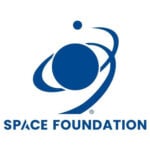Space Symposium
Hosted Payloads Group Considers Hitching a Ride
Written by: developer
 The Hitching a Ride - All About Hosted Payloads panel at the 28th National Space Symposium, moderated by Gen. Lance Lord, USAF, Ret., chief executive officer, L2 Aerospace, was co-sponsored by the Hosted Payload Alliance. The panel explored how to make hosted payloads a critical element in the access-to-space strategy.
The Hitching a Ride - All About Hosted Payloads panel at the 28th National Space Symposium, moderated by Gen. Lance Lord, USAF, Ret., chief executive officer, L2 Aerospace, was co-sponsored by the Hosted Payload Alliance. The panel explored how to make hosted payloads a critical element in the access-to-space strategy.
Key points from each panelist include:
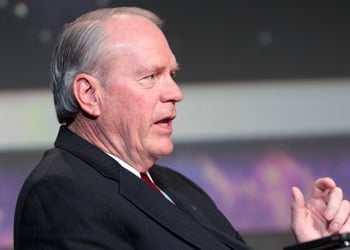 Lt. Gen. Brian Arnold, USAF, Ret., vice president - space strategy, Raytheon Space and Airborne Systems: Cost is the overriding factor for making hosted payloads a viable concept; cost of operations, faster cycle time, reduced burden of paying for the launch. The U.S. government needs to take advantage of the large commercial market, which offers resiliency and the ability to insert new technologies more rapidly. The biggest challenge is resistance to change and risk. We need to develop a process for funding that starts at the beginning of the cycle, we need to understand how to insert the government into commercial cycles and we need a single point of contact in the government.
Lt. Gen. Brian Arnold, USAF, Ret., vice president - space strategy, Raytheon Space and Airborne Systems: Cost is the overriding factor for making hosted payloads a viable concept; cost of operations, faster cycle time, reduced burden of paying for the launch. The U.S. government needs to take advantage of the large commercial market, which offers resiliency and the ability to insert new technologies more rapidly. The biggest challenge is resistance to change and risk. We need to develop a process for funding that starts at the beginning of the cycle, we need to understand how to insert the government into commercial cycles and we need a single point of contact in the government.
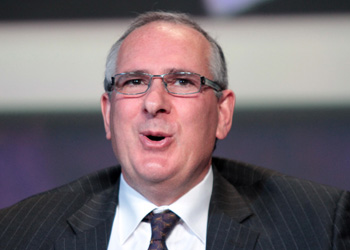 Arnold Friedman, senior vice president, Space Systems/Loral: Many people are amazed to find that there are 300 GEO and 100 LEO commercial satellites circling the globe. The commercial industry is growing with the bandwidth requirements of the world. There are many, many satellites scheduled to launch and many can offer hosted payload capability. Using hosted payloads for GEO spacecraft is well established and beneficial within the industry. Hosted payload is not for every mission, but it does have applications and industry appreciates the government offering hosted payload as an option in contract bids.
Arnold Friedman, senior vice president, Space Systems/Loral: Many people are amazed to find that there are 300 GEO and 100 LEO commercial satellites circling the globe. The commercial industry is growing with the bandwidth requirements of the world. There are many, many satellites scheduled to launch and many can offer hosted payload capability. Using hosted payloads for GEO spacecraft is well established and beneficial within the industry. Hosted payload is not for every mission, but it does have applications and industry appreciates the government offering hosted payload as an option in contract bids.
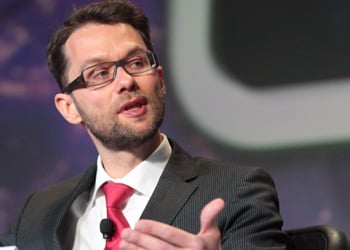 Akos Hegyi, head of EDRS Services, Astrium Services: ESA and DLR are working with Astrium Services to operate a public/private space data highway. The space data highway will provide a relay network to a constellation of satellite, the first of which will be a hosted payload. A new high-speed laser technology is being injected. Because it is a fully funded program, other governments can buy services and just "pay by the pound" rather than having to invest in development or infrastructure.
Akos Hegyi, head of EDRS Services, Astrium Services: ESA and DLR are working with Astrium Services to operate a public/private space data highway. The space data highway will provide a relay network to a constellation of satellite, the first of which will be a hosted payload. A new high-speed laser technology is being injected. Because it is a fully funded program, other governments can buy services and just "pay by the pound" rather than having to invest in development or infrastructure.
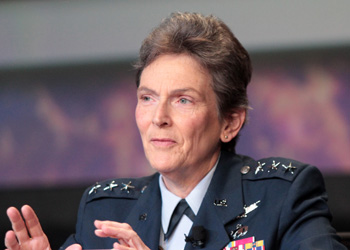 Lt. Gen. Ellen M. Pawlikowski, USAF, commander, Space and Missile Systems Center: Hosted payloads are a way to get systems and sensors into space without having to have large infrastructure. CHIRP, the first Air Force commercially hosted payload, has shown great results for defense, technical intelligence and civilian environmental applications. Stood up a hosted payload office at SMC a year ago and now is the time to get to work: going out with long-term contract for services, establishing relationships, doing engineering analysis and development, looking for standard interface for developers, establishing a hosted payload interface unit. Directorates are now looking at specific payloads, including widefield-of-view infrared sensors, weather sensors, wideband communications and space situational awareness (space "neighborhood watch").
Lt. Gen. Ellen M. Pawlikowski, USAF, commander, Space and Missile Systems Center: Hosted payloads are a way to get systems and sensors into space without having to have large infrastructure. CHIRP, the first Air Force commercially hosted payload, has shown great results for defense, technical intelligence and civilian environmental applications. Stood up a hosted payload office at SMC a year ago and now is the time to get to work: going out with long-term contract for services, establishing relationships, doing engineering analysis and development, looking for standard interface for developers, establishing a hosted payload interface unit. Directorates are now looking at specific payloads, including widefield-of-view infrared sensors, weather sensors, wideband communications and space situational awareness (space "neighborhood watch").
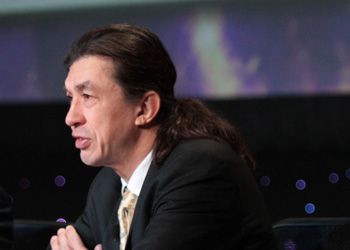 Dr. James Reuther, director for game changing technologies and crosscutting capability demonstrations, NASA: The NASA Office of the Chief Technologist is a growing area that integrates technology across directorates, leads transfer of technology to the private sector, demonstrates social impact of technology, fellowships, innovation concepts and innovation demonstrations. These demonstrations often "need a ride" to test technologies, for example when microgravity is required. The Office focuses on both small mission and large, high-dollar technology demonstration missions. Because they are tests, there is an informed risk posture. It is critical that there be a customer who will fly the technology once it is proven. Cost/benefit is important, which drives selection of host. The primary way to get to space for these demonstrations is via hosted payload, but the costs must be lower than dedicated launch.
Dr. James Reuther, director for game changing technologies and crosscutting capability demonstrations, NASA: The NASA Office of the Chief Technologist is a growing area that integrates technology across directorates, leads transfer of technology to the private sector, demonstrates social impact of technology, fellowships, innovation concepts and innovation demonstrations. These demonstrations often "need a ride" to test technologies, for example when microgravity is required. The Office focuses on both small mission and large, high-dollar technology demonstration missions. Because they are tests, there is an informed risk posture. It is critical that there be a customer who will fly the technology once it is proven. Cost/benefit is important, which drives selection of host. The primary way to get to space for these demonstrations is via hosted payload, but the costs must be lower than dedicated launch.
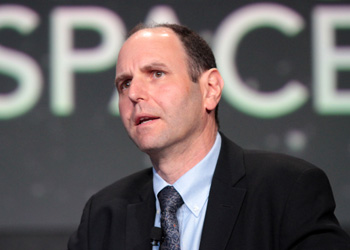 Philippe Sivac, deputy programme manager, European Space Agency’s Large Platform Program: Discussed hosted payload missions under development, mostly in the telecom area: Alphasat (complemented with four hosted payloads), EDRS-A (laser terminal flying on a commercial spacecraft) and EDRS-C (one half of the small spacecraft is dedicated to hosted payloads). The main issues have been readiness, ensuring a full service for the life of the product and balancing the needs of the primary payload with the hosted payloads. Must get out of our "comfort zone" of one monolithic mission.
Philippe Sivac, deputy programme manager, European Space Agency’s Large Platform Program: Discussed hosted payload missions under development, mostly in the telecom area: Alphasat (complemented with four hosted payloads), EDRS-A (laser terminal flying on a commercial spacecraft) and EDRS-C (one half of the small spacecraft is dedicated to hosted payloads). The main issues have been readiness, ensuring a full service for the life of the product and balancing the needs of the primary payload with the hosted payloads. Must get out of our "comfort zone" of one monolithic mission.
See photos here. See video here.
This article is part of Space Watch: June 2012 (Volume: 11, Issue: 6).

